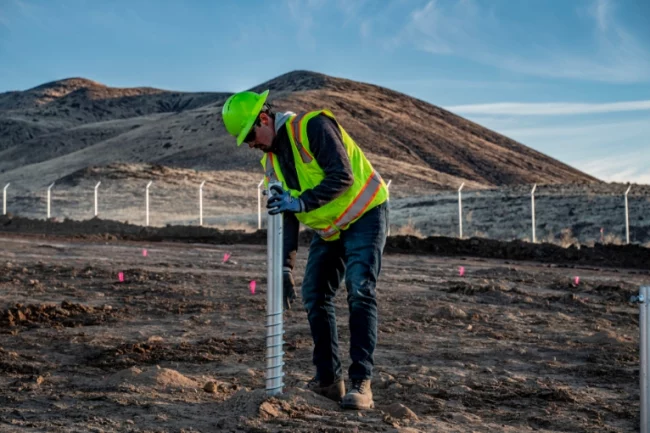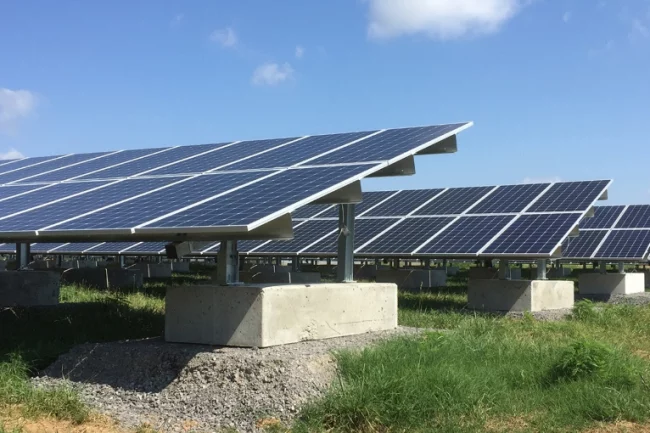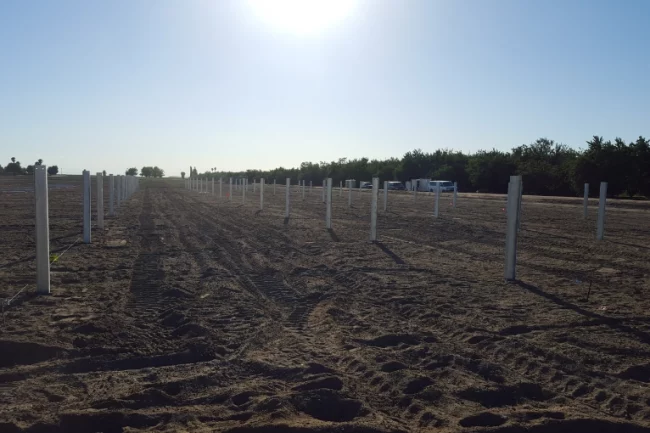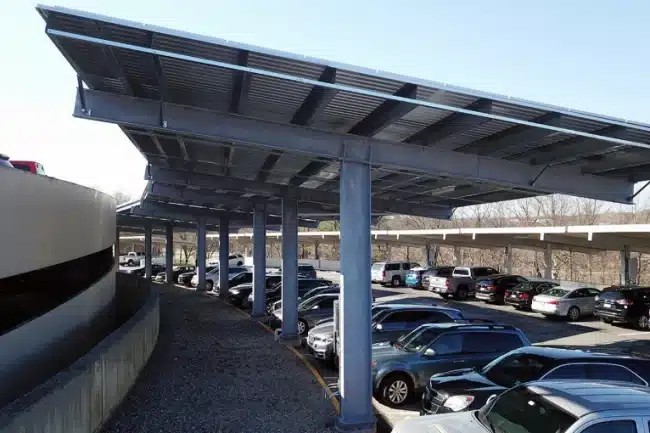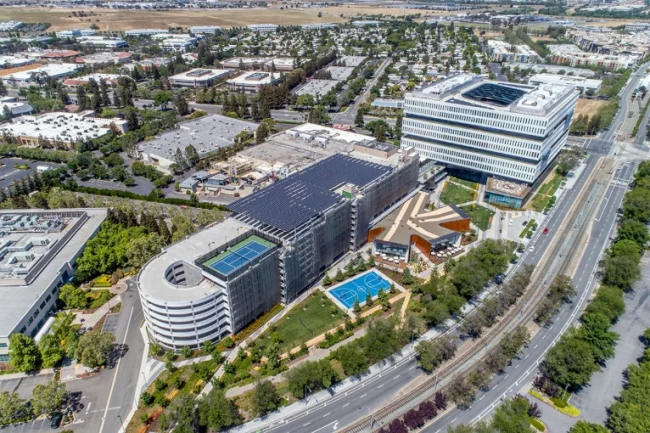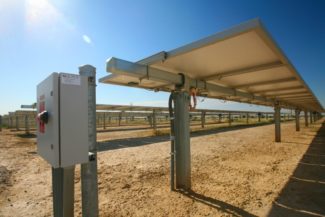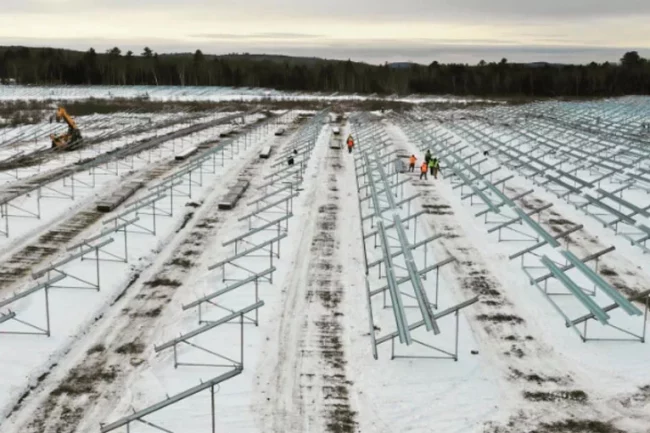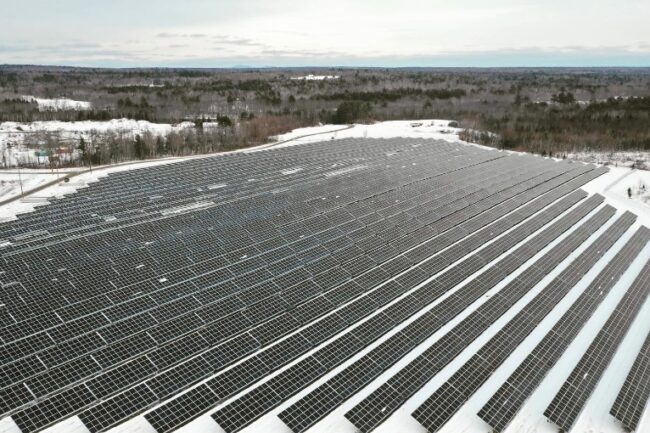As featured in PV Magazine, Sept 2023
Outperforming the weather
Wind forces can be categorized into three main types. Static forces that exert constant pressure on a tracker, causing deflection or bending that affects tracking mechanism accuracy. Dynamic forces, which are less predictable. And speed and direction fluctuations that cause vibration and stress, reducing tracking accuracy, misaligning panels, and increasing component wear and tear. Advanced aerodynamic models that consider turbulence and gusts can address dynamic wind loads.
Extreme weather is increasingly becoming the norm for solar developers. Wind testing plays a critical role in discerning how wind speeds, turbulence, and shifting direction can affect the design and production of solar trackers. Chase Anderson, director of product development at Terrasmart,
explains the need for proper wind testing.
Aeroelastic wind forces result from tracker interactions with surrounding airflow and can include uncontrolled vibration or oscillation, misalignment, reduced tracking accuracy, and component failure.
Engineers subject small-scale models to varying conditions inside wind tunnels to identify design limitations early in development. Mock-ups of upwind terrain can consider obstructions including trees and buildings while simulations of severe wind events such as hurricanes can provide peak performance data. Elevation curves and modifiable surface roughness enable cost-effective adjustments with minimal risk before full-size trackers are manufactured.
Shelter from the storm
Stow angles are critical for ensuring solar tracker wind resilience. Designs must
account for static and dynamic wind loads associated with various stow angles. Damping can help control or even dissipate
vibrational energy and oscillation. During development of a wind-resilient one-in-portrait (1P) tracker, various tilt angles were wind tunnel tested to identify an optimal stow strategy. Lower tilt angles resulted in fewer static loads on the structure and less force on the system. A zerodegree stow strategy exhibited the lowest coefficient value, indicating lower lateral load. While higher tilt angles placed additional stresses on the structure, requiring more foundations or increased size, a zero-degree stow strategy, with appropriate overdamping and stiffness, required fewer foundations.
To achieve the ideal characteristics for a zero-degree stow, tracker design must achieve: a balance of stiffness, damping, and weight-to-control costs; protect assets; and maintain efficiency. Although stowing at high-tilt angles can be safe, it might lead to increased loads on tracker foundations and structure, requiring stiffer systems or overdamped designs to mitigate aerodynamic instability.
Damping down
To reduce the risk of instability and damage, trackers must be designed with proper damping to control vibration and oscillation. The zerodegree stow 1P solar tracker discussed above had a 30-meter to 40-meter wing length. Wind tunnel testing determined that installing two to four dampers per row would create a properly damped structure. Under-damped systems can become unstable, leading to costly mitigation to address torsional forces that might otherwise lead to tracker damage or failure. Racking partners should be asked if dampers are included in aeroelastic wind tunnel tests and if the tested dampers accurately represent the final design.
Performance testing
Multi-row testing inside a wind tunnel can provide further insight into real-world tracker behavior. Verifying aeroelastic effects during design helps maintain efficiency, prevent mechanical wear and tear, reduces downtime, and increases system efficiency. Positioning, shielding, and wind vortices can all affect solar array aeroelastic performance. Multi-row testing – where engineers rotate the table to multiple angles in the tunnel to study the impact of static and dynamic wind on a system’s perimeter and central rows – helps to determine the ideal number of foundations and the most cost-effective array height.
Critical test
Another critical test involves pluck testing, in which a tracker is pulled and released to evaluate its dynamic behavior in a simulated gust of wind. The process includes high-amplitude and low-amplitude tests, as well as a shake test, to assess how the tracker responds to dynamic loads.
Proper pluck testing ensures that a tracker will perform as expected in realworld wind conditions, preventing costly downtime. This ensures that the system remains stable and resilient, even when faced with battering winds.
Partner selection
When evaluating tracking technology, it is essential to consider manufacturers with extensive wind tunnel testing data. It is also important to confirm with manufacturers that their design adheres to the tolerances specified in their aeroelastic wind tunnel studies and meets compliance with specified tolerances, natural frequency, damping, array height, chord length, tracker length, and a site’s ground coverage ratio. Thirdly, checks to designs should ensure they account for pressures and loads that exceed standard building code requirements.
By understanding wind effects and conducting thorough testing, solar developers and asset owners can select the right solar tracker technology, secure their investment, and achieve maximum energy yield even in the face of gusty winds. Employing advanced wind tunnel testing techniques and collaborating with experienced tracker solution providers ensures long-term performance while meeting financial targets in any weather.
About the author
Chase Anderson has played a pivotal role in advancing Terrasmart’s research and testing on wind and snow-load analysis. As an integrated racking, installation, and software company, Terrasmart has installed 20 GW of solar module capacity across 4,900 projects on some of the toughest sites in the United States.

